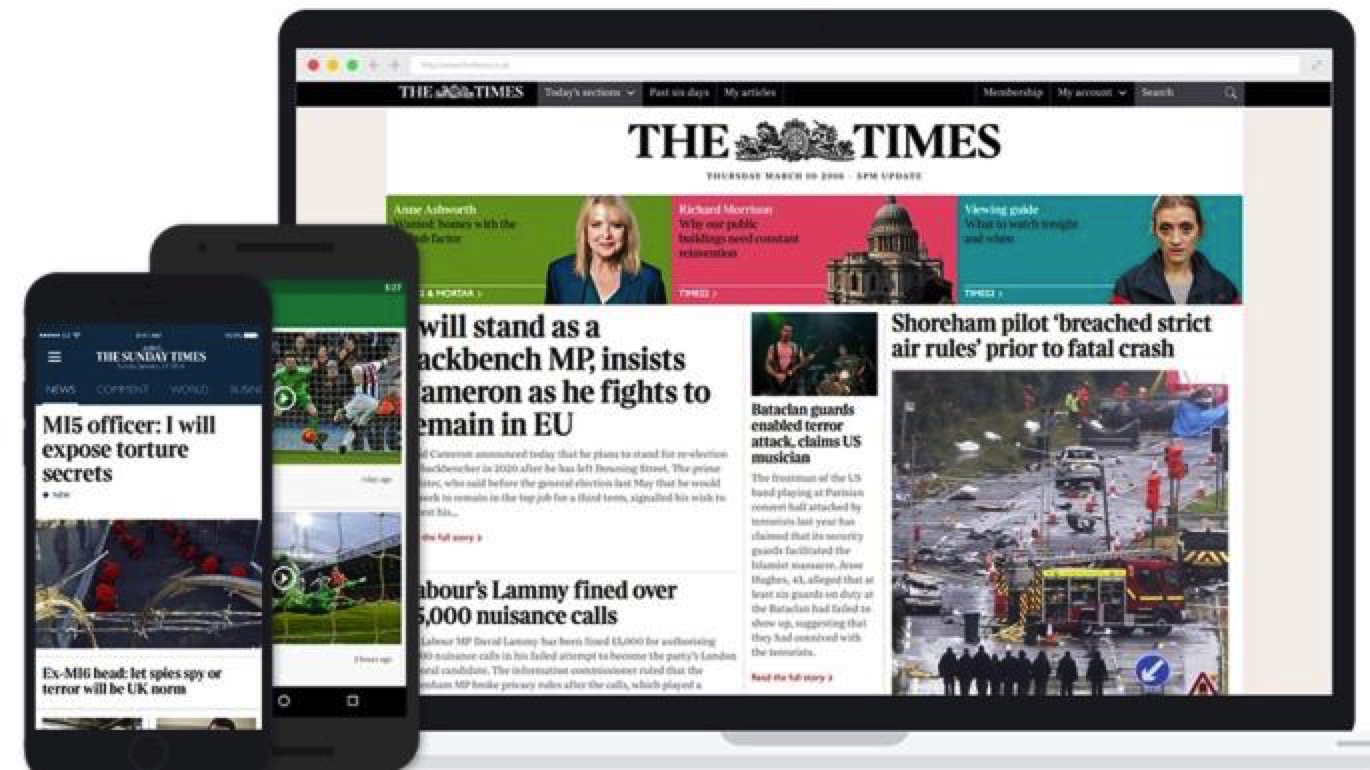
The Times reinvents editions for the digital age
The big news is out. The Times, already an outlier amongst UK newspapers in having a hard paywall, is changing its model again. Not the paywall – this is not a retreat from paid as its stablemate The Sun has done. No, this is a retreat from the treadmill of breaking news.
What. The. Hell.
At least – that’s the reaction I imagine from many journalists. Breaking news is at the very heart of journalism, surely?
Well, that’s the thing. With a few exceptions for major, major stories, I think the profession cares much more about “breaking news” than the audience do. Indeed, I think it’s safe to say that journalists care more about “news” as a concept than the average person on the street does. That’s why the “abandoning breaking news” angle has been latched onto so strongly – because that’s the journalists’ obsession.
I don’t think that’s what this is really about. This is about adjusting our obsessions in light of reader needs. And that’s exactly what a paid product should be doing.
Time for news

Now, full disclosure time: I did some workshops for senior Times and Sunday Times staff in the build-up to this change (and it’s bloody lovely to be able to talk about it at last), so I have some insights into the thinking behind it – but this is very much a personal take, based on several months of thinking through the implications of what the team were planning.
This change isn’t a grand theory conjured out of the air – instead it’s based on detailed analysis of how people are actually using the website and apps. And, surprise, surprise, it shows that people aren’t obsessively checking the website for news.
This, once you realise it, is common sense. Most people are not in a position where spending their days cruising news sites for information is routine. They have times in the day when information is most critical to them, and other times when they have the luxury to sit back and read things. The rest of the time? They’re working or playing or looking after their family. The work Neil and I did with the Financial Times a few years back highlighted some very, very clear patterns in when their subscribers were using the site. Similar patterns exist for The Times.
So, what we’re seeing here is not a retreat from breaking news as such, but more a reshaping of how they report news around the readers’ needs – especially around time. That’s important because time is the big factor that people keep ignoring. The boom in content – and content availability – that the Internet has brought, and mobile has exacerbated, has not been matched by a boom in available reading time. That, as standard digital journalism theory states, leads to an attention crisis, where readers’ attention is the scarce resource, not content. One solution to that is the trawler model, whereby you put out masses of content in the hopes that enough relevant readers will be caught in the net – and that’s been the approach taken by most news organisations. And that’s why we’re approaching what you might call peak content.
The Times is taking the other path – the one less traveled. The Economist has been exploring it, and now they have company on the narrow road of focused, curated packages of information. In essence their offer is “here’s a manageable amount of content at a time that suits you”.
The charm of completion
And what’s interesting about a contained package of content? Completion. You can finish it – and feel satisfied. You’re not overwhelmed by it. The Internet is an endless treadmill of information. You can never finish it – and never have been able to since the first few months of the web’s life, when it was running off Sir Tim Berners Lee’s desk. Your Facebook feed scrolls endlessly. Your Twitter timeline has no end. And so, with these services you can never really have the feeling of having completed something – of feeling informed.
Other organisations have poked at this idea. For example, the Quartz morning e-mail is a classic pitch for psychological completion. You can get through that e-mail on your commute and feel informed before you get to your desk. This revamp of the venerable newspaper’s digital offering is putting the idea at the centre of their offer.

The Times is releasing content in four drops through the day:
- Midnight – your morning edition
- 9am – a markets and business centric drop – brief yourself at your desk
- Noon – lunchtime reading
- 5pm – ready for the commute home and the evening.
They’re all clearly aligned around consumer need and availability. And they free Times journalists from rushing to get content out now. It gives them an ability to concentrate on getting the more measured and analytical view, while everyone else is rushing around to do the breaking news story. And that’s going to be the success/failure axis of this process. Can they do that well enough to continue to justify the cost of subscribing in an over-saturated market?
That’s question one. The second question is: can they get their subscribers into the habit of checking the site or the apps at these times?
A brave experiment
If there’s one issue the whole industry is sticking its head in the sand over – it’s the over-supply of news. We have far too much of it, and too much of it is repetitious without bringing anything new to the table. There’s certainly room in the market for a number of high volume, high speed, low depth news outlets. But it won’t be a large number of them, as it’s a hard, vicious and expensive game to play in, with high staff costs, intense pressure and a deep reliance on an ever shifting advertising market.
We need other models of news. Journalism isn’t going to be transported into the digital era on the back of a single business model. The crew at The Times and The Sunday Times are to be commended for trying something different – something that has the potential to mix the best of digital and print thinking in a whole new way.
It will certainly be interesting to watch…
Sign up for e-mail updates
Join the newsletter to receive the latest posts in your inbox.










